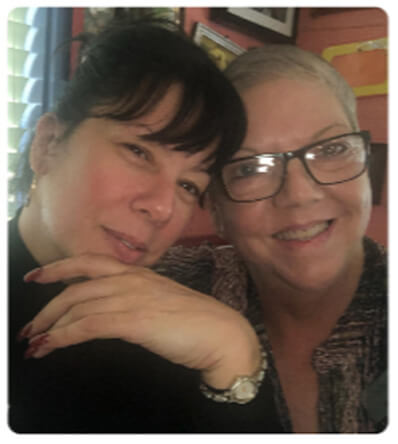Activities of Daily Living (ADLs) and Instrumental Activities of Daily Living (IADLs) are used to assess a person’s ability and functional status. These are daily activities essential to a person’s wellbeing and that healthy individuals can do for themselves. ADLs and IADLs are used by many health care professionals, social workers and senior community administrators. They’re also part of the Department of Veterans Affairs (VA)’s criteria for benefits such as the Aid and Attendance benefit.
VA Activities of Daily Living Infographic
It’s important to understand how the Veterans Benefits Administration (VBA), the branch of the VA for monetary benefits, defines ADLs and IADLs when you apply.
See the infographic below for the VA’s definition of ADLs and IADLs as described in VA form 21P534-EZ.
On the VA’s website, it also describes activities of daily living as: bathing, feeding, dressing, toileting, adjust prosthetic devices, meal preparation, medication management or protection from environmental hazards due to mental or physical incapacity.

How many ADLs are there?
ADLs considered as basic activities of daily living are: feeding oneself, bathing & grooming, dressing, mobility (such as transferring from bed to chair) and using the toilet.
Sidney Katz, M.D., developed the original ADL scale for self-sufficiency in 1950. Since then, it’s been modified or adapted by various health care teams and organizations. While the VA combines certain activities together for a list of five basic ADLs, some list six, seven or more ADLs.
What are IADLs?
IADLs, or instrumental activities of daily living, can be viewed as higher level of activity or the next step to living independently. For example, eating is step one. Meal preparation is step two. Other IDLs are housekeeping, shopping, laundry, transportation, handling finances, managing medications and using a phone.
M. Powell Lawton, PhD, and Elaine M. Brody, MSW, developed the instrumental activities of daily living in 1969, known as the Lawton-Brody Scale of IDLs.
List of ADLs for VA Purposes
ADLs are basic personal tasks that individuals do themselves on a daily basis to live independently. The VA defines ADLs as five activities:
- Eating,
- Bathing/showering,
- Dressing,
- Using the toilet (continence), and
- Transferring (mobility as in transferring from a chair to standing).
Watch video: CEO Veterans Home Care talks about ADLs
VA Requires 2 or More ADLs for the Aid and Attendance Benefit
The VA recognizes assistance with ADLs for medical expense purposes, such as when a disabled veteran (or the surviving spouse of a veteran) seeks financial aid for in-home care. Among other things, the claimant must need regular assistance with two or more ADLs or supervision due to a mental disorder to qualify for the Aid and Attendance benefit.
VA Criteria for Aid and Attendance Besides ADLs
Besides needing assistance with ADLs, the VA’s other medical criteria for Aid and Attendance eligibility is when a person:
• has corrected vision of 5/200 or less in both eyes; OR
• has concentric contraction of the visual field to 5 degrees; OR
• is a patient in a nursing home due to mental or physical incapacity; OR
• is bedridden apart from any prescribed course of convalescence or treatment.
VA’s Definition & List of IADLs
The VA defines Instrumental Activities of Daily Living (IADLs) as:
- Shopping
- Food preparation
- Housekeeping
- Laundering
- Handling medications
- Using the telephone
- Transportation (except for medical purposes such as doctor visits)
VA Recognition of IADLs for Compensation or Pension
VA guidelines can be somewhat confusing. VA Form 21P-534EZ says: The VA generally does not recognize assistance with these (IADL) activities as medical expenses: (1) Shopping; (2) Food Preparation; (3) Housekeeping; (4) Laundering; (5) Handling medications; (6) Using the telephone; (7) Transportation (except for medical purposes such as transportation to a doctor’s appointment).
Despite that statement, the form explains that the VA does recognize IADLs as medical expenses when applying for a monthly VA pension or compensation. There are questions on VA Form 21P-534EZ and VA Form 21-2680 about IADLs. The VA will allow the cost of unreimbursed in-home care (or custodial care) delivered by a person without medical skills or training as a medical expense.
VA Terminology Differs Somewhat from Medicare
While sometimes the VA describes custodial care (or assistance with ADLs and IADLs) as medical care or medical expenses, Medicare doesn’t. The Centers for Medicare and Medicaid Services (CMS) defines medical care differently.
CMS does not consider help with ADLs “medical care.” It defines support with ADLs as: custodial care, unskilled care or long-term care. Medicare.gov stipulates that help with basic personal tasks such as ADLs do not qualify as medical care.
This is an important distinction to understand when checking into long-term care options for seniors. It may be one of the reasons people overlook the VA when seeking financial aid for long term care, home care or custodial care. In VA terminology, custodial care delivered by a non- licensed caregiver is sometimes medical care. Some may not realize the VA counts custodial care cost as a medical deduction when applying for Compensation, Pension and Aid and Attendance.
Veterans Who Need Help with ADLs
Wartime veterans or their surviving spouses who need assistance with ADLs may want to apply for the VA Pension with Aid and Attendance. Veterans Home Care has unparalleled expertise and provides free help with the VA application. Those who choose to use their benefits primarily for an in-home caregiver or adult daycare, should contact Veterans Home Care for help 888- 314-6075 or www.veteranshomecare.com.















